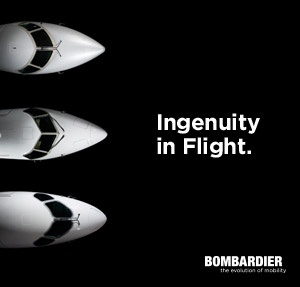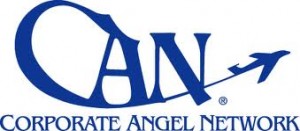JetBlue wants to launch two flights to Montego Bay from Boston and Orlando
September 10, 2009
The LCC has applied for authority to serve Montego Bay from both Boston and Orlando. The airlines plans to launch daily nonstop flights from Orlando to Montego Bay on February 8; from Boston it plans to launch a weekly nonstop to Montego Bay on January 9, 2010. It is also planning to increase frequencies on existing service between JFK and Montego Bay, to 11 weekly flights.
AirTran Airways to launch service to Aruba
September 10, 2009
The LCC airline has announced it will begin weekly flights with B737-700 aircraft between Atlanta and Orlando and the island of Aruba. The new service will be launched between Atlanta and Aruba in December and between Orlando and Aruba in February 2010.
The Dominican Republic has approved 805 new charter flights
September 10, 2009
The Civil Aviation Authority (JAC) of the Dominican Republic has announced this week that it has approved a total of 805 passenger and cargo charter flights from abroad. The authority includes 586 flights to be operated by Canjet Airlines from a number of cities in Canada to Punta Cana. It also authorized 56 charter flights by Haiti’s Tortug Air to operate; as well as three flights to be operated by Livingston SPA between Milan and La Romana; and Transaero Airlines to operate 54 flights between Moscow and Punta Cana as well as 38 flight s from St. Petersburg to Punta Cana. Other approvals included 19 flights operated by Finnair OYJ between Helsinki/Halifax and Punta Cana, as well as 28 cargo flights to be operated by Arrow Air between Miami and Santo Domingo along with three flights to be operated by Aerogal between Guayaquil/Quito and Punta Cana.
LAN believes it has passed the worst of the crisis
September 10, 2009
Enrique Cueto, CEO of the Chilean “model airline” announced that the worst of the crisis is now over, but obviously it is still subject to potential problems due to the H1N1 crisis in the northern hemisphere. The “model airline” reported $69.2 million net income in the first six months, down 57% from the same period last year. It is maintaining its forecast for growth of 10% in 2009 and is keeping its plan to invest $1.4 billion in new aircraft, including the two B777F which have already been received.
Taca Growing with new flights and destinations
September 10, 2009
As reported earlier, the Central America-based TACA Group carrier, an equity partner in Mexico’s leading LCC, Volaris, is expanding its presence in the market by adding frequencies and new six new destinations in Mexico from its base in El Salvador as well as from Lima, Peru. The new flights and expanded services will be launched from September to November 15. The airline already serves 41 destinations in 22 countries and is determined to continue to expand its presence within the region. It is adding a new nonstop between Lima and Mexico City as well as new service from its hub in El Salvador to Orlando, Florida with connecting service to Cancun, Houston, Roatan and San Pedro Sula, Honduras. It is also building its hub in Lima to provide new service to Mexico City. The airline is using its Next Generation A319, A320 as well as ERJ-190s and ATR for short haul routes like El Salvador-San Pedro Sul and Roatan. Estuardo Ortiz, Executive VP and Chief Operating Officer of the airline group stated: “These new flights respond to the requirements of our customers, to provide them with more options to fly TACA where ever they want to fly.”
Embraer at Air & Space Conference and Technology Exposition
September 10, 2009
The light attack and advanced training Super Tucano turboprop will be highlighted
São José dos Campos, September 10, 2009 –
Embraer is a newcomer to the Air Force
Association (AFA) Annual Air & Space
Conference and Technology Exposition taking
place September 14-16, in its 24th edition. The
conference will be held at the Gaylord National
Hotel & Convention Center on the Potomac, in
National Harbor, Md., just minutes from
downtown Washington, D.C.. At the event,
Embraer will promote its most successful defense
product: the Super Tucano, a single- or two-seat
light attack and advanced training turboprop.
“The AFA Annual Air & Space Conference and Technology Exposition is one of the market’s
most productive trade events,” says Acir Padilha, Embraer Vice President, Marketing and
Sales, Defense Market. “Therefore, we are glad to have this opportunity to promote the Super
Tucano, the only turboprop aircraft in production, worldwide, with its low operating cost,
which is combat proven and specifically designed for counterinsurgency, irregular warfare,
and day and night missions, as well as advanced training.”
Of a total of 169 aircraft sold, so far – 99 of which to the Brazilian Air Force (Força Aérea
Brasileira – FAB) – Embraer has orders from the Air Forces of Chile, the Dominican
Republic, and Ecuador. The Super Tucano currently operates successfully with the Brazilian
and Colombian Air Forces on border surveillance and operational missions.
Hawker Beechcraft Announces First Flight, Accelerated Testing of AT-6 Light Attack Aircraft
September 10, 2009
Advanced derivative of world’s most proven trainer aircraft will offer light attack, armed reconnaissance solution for warfighter needs
WICHITA, Kan. (Sep. 10, 2009) – Hawker Beechcraft Corporation (HBC) today announced the successful first flight of its AT-6 prototype and the program’s progression into the next phase of flight test. The AT-6 prototype is a structurally strengthened derivative of the highly successful U.S. Air Force and U.S. Navy T‑6A/B trainer – the world’s most proven military trainer aircraft – that will offer the U.S. Air Force and partner nations a robust airpower solution that meets a wide spectrum of needs at a fraction of the cost of other platforms.
“We are very optimistic about the role the AT-6 will play for the warfighter – both in the U.S. and in partner air forces around the world,” said Bill Boisture, HBC chairman and CEO. “This is going to be a great airplane and I am pleased with the rapid pace we are moving through our planned test program. We are almost three weeks ahead of schedule. We believe the AT-6 offers the broadest range capabilities available in the market and that is why we continue to invest in its future today.”
The AT-6 is designed to be able to quickly transition pilots between basic flight training missions and complex NetCentric light attack and armed reconnaissance missions. The next phase of flight testing will last through October, during which the company will continue flight envelope expansion of the heavily instrumented AT-6 prototype, along with performance and handling qualities assessments with various external store configurations.
The Hawker Beechcraft T-6 derivative fleet recently passed the one million flight hour mark and 500th delivery with aircraft currently being flown by the U.S. Air Force, U.S. Navy, Hellenic Air Force of Greece, NATO Flying Training in Canada and the Israeli Air Force. T-6 trainers for the Iraqi Air Force are currently in production in Wichita, Kan., and are slated for delivery to Iraq beginning later this year.
Hawker Beechcraft Corporation is a world-leading manufacturer of business, special mission and trainer aircraft – designing, marketing and supporting aviation products and services for businesses, governments and individuals worldwide. The company’s headquarters and major facilities are located in Wichita, Kan., with operations in Salina, Kan.; Little Rock, Ark.; Chester, England, U.K.; and Chihuahua, Mexico. The company leads the industry with a global network of more than 100 factory-owned and authorized service centers.
Sikorsky Aircraft Breaks Ground for Co-generation Project
September 10, 2009
STRATFORD, Conn., Sept. 10, 2009 – Sikorsky Aircraft Corp. has begun construction of a new co-generation plant at its Stratford facility to become more energy independent. Sikorsky is a subsidiary of United Technologies Corp. (NYSE:UTX).
Sikorsky chose Carrier Corp., a UTC subsidiary, for a turnkey custom solution and installation of the project. Sikorsky broke ground on Sept. 5. The co-generation plant is being built onsite next to the existing powerhouse. The project is expected to take a year and a half to complete.
Co-generation, also known as combined heat and power (CHP), is the on-site production of two kinds of energy – usually electricity and heat – from a single source of fuel. Co-generation often replaces traditional methods of acquiring multiple forms of energy, such as purchasing electricity from the power grid and separately burning natural gas or oil in a furnace to produce heat or steam.
”While the traditional method of purchasing electric energy from the grid is convenient, it is very inefficient and wastes more than two-thirds of the energy in the original fuel due to production and transportation losses,” said Robert Araujo, Manager of Sustainable Development and Environmental Health &Safety Programs.
“The co-generation process captures the unused heat that is generated from a typical power plant and transforms it into usable energy. By using this technology at the Stratford site, Sikorsky can generate 10 megawatts or 82 percent of our Stratford facility energy needs and save 8,900 tons of carbon dioxide emissions annually. This will make Sikorsky less energy dependent and contribute to a healthier global environment,” Araujo said.
David Eherts, Vice President of EH&S and Product Safety, said: “Though Sikorsky will spend almost $26 million to construct the facility, based on the reduction in energy costs, the project is estimated to pay back in less than four years, so we’re very eager to begin saving.”
Sikorsky Aircraft Corp., based in Stratford, Conn., is a world leader in helicopter design, manufacture and service. United Technologies Corp., based in Hartford, Conn., provides a broad range of high technology products and support services to the aerospace and building systems industries worldwide.
Helicopter Support Inc. (HSI) Activates Contractor Support Site for Light Utility Helicopters
September 10, 2009
FORT RUCKER, Ala., Sept. 10, 2009 – Sikorsky Aerospace Services announced today its Helicopter Support Inc. (HSI) business unit has begun operating a new contractor logistics support site here for Light Utility Helicopters. Sikorsky Aerospace Services is the aftermarket business of Sikorsky Aircraft Corp., a subsidiary of United Technologies Corp. (NYSE:UTX).
The first three of six UH-72A Lakota helicopters from American Eurocopter arrived at the site in early July, signifying a key event for the on-time activation of the seventh contractor logistics support (CLS) site operating in the HSI CLS program. The aircraft delivery there brings the LUH fleet to a total of 72 aircraft.
“The Fort Rucker CLS site will support an air ambulance detachment that provides mission-critical support to army aviator training, Military Assistance to Safety and Traffic (MAST) and Army Ranger training in North Georgia,” said Sam Mehta, HSI President. “The on-schedule activation of the CLS site at the ‘home of Army Aviation’ reemphasizes our commitment to our customer and illustrates the strong team relationships that continue to make this program a success.”
The U.S. Army has purchased 345 LUH aircraft, which will be supported through the HSI CLS program. The CLS team continues to deliver LUH fleet operational availability rates in excess of 90 percent.
The Fort Rucker facility is the single training base for all U.S. Army aviation as well as U.S. Air Force rotary wing pilots. In addition to HSI, Sikorsky Aerospace Maintenance, American Eurocopter, Thales and SAGEM are providing contractor logistics support to the EADS LUH Program.
Czech Government Awards Research Grants to GE Aviation Czech
September 10, 2009
PRAGUE, CZECH REPUBLIC — September 10, 2009 — The Czech Government has
awarded research grants valued at about $4 million USD (70 million CZK)
to GE Aviation Czech s.r.o The grants will assist GE Aviation Czech in
incorporating advanced technologies into its existing Walter M601 series
engines to reshape the landscape of turboprop aviation. These research
grants, awarded through the Czech Republic’s Ministry of Industry and
Trade, are the first grants ever received by GE Aviation from the Czech
Government.
Since its debut in 1975, the M601 turboprop engine family has amassed 17
million flight-hours on more than 30 aircraft types, marking a record of
durability, reliability and ease of maintenance. GE Aviation Czech, in
cooperation with the Czech Aeronautical Research and Test Institute,
will use the grants to incorporate sophisticated technologies into a new
derivative of the M601 engine. The new engine, the H80, will feature
modern 3D aerodynamic design, advanced materials and new features, such
as an axial compressor blisk, to reduce weight and parts count while
significantly enhancing engine performance.
“The confidence and support that the Czech Republic’s Ministry of
Industry and Trade has bestowed upon GE Aviation Czech are a testament
to the H80’s potential and further solidifies the government’s
commitment to the aviation industry here in the Czech Republic,” said
Paul Theofan, GE Aviation Czech President.
The H80 engine will deliver more shaft-horsepower, improved fuel
efficiency and increased temperature margin, significantly enhancing
hot-day takeoff performance and high-altitude cruise speeds. The H80
engine will also feature an extended overhaul interval of 3,600
flight-hours and 6,600 cycles.
The development work is being performed under GE Aviation Czech’s
aircraft engine Design Organization Approval authority issued by the
European Aviation Safety Agency (EASA). EASA type certification is
expected in early 2010, shortly followed by certification with the U.S.
Federal Aviation Administration. All H80 models will be produced at GE
Aviation Czech’s fully integrated production and test facility in
Prague.
In 2008, GE Aviation acquired certain assets of Walter Engines a.s., a
Czech company with over 90 years of aviation heritage, and formed GE
Aviation Czech s.r.o. GE Aviation Czech specializes in the design,
production and service of turboprop engines at its integrated research
and development and manufacturing facility in Letnany, Prague, in the
Czech Republic.
Founded in 1922, the Czech Aeronautical Research and Test Institute
(VZLU), is a research organization of the Czech Republic that provides
research and technological support to the aeronautic, space and other
selected industries. It has more than 150 engineers with masters or
doctorate degrees, and its extensive scientific, prototyping and testing
capabilities include aerodynamic, fatigue, environmental and systems
test laboratories for aircraft, engines and propellers. For more
information, visit http://www.vzlu.cz/en/.
GE Aviation, an operating unit of General Electric Company (NYSE: GE),
is a world-leading provider of commercial and military jet engines and
components as well as avionics, electric power, and mechanical systems
for aircraft. GE Aviation also has a global service network to support
these offerings.








